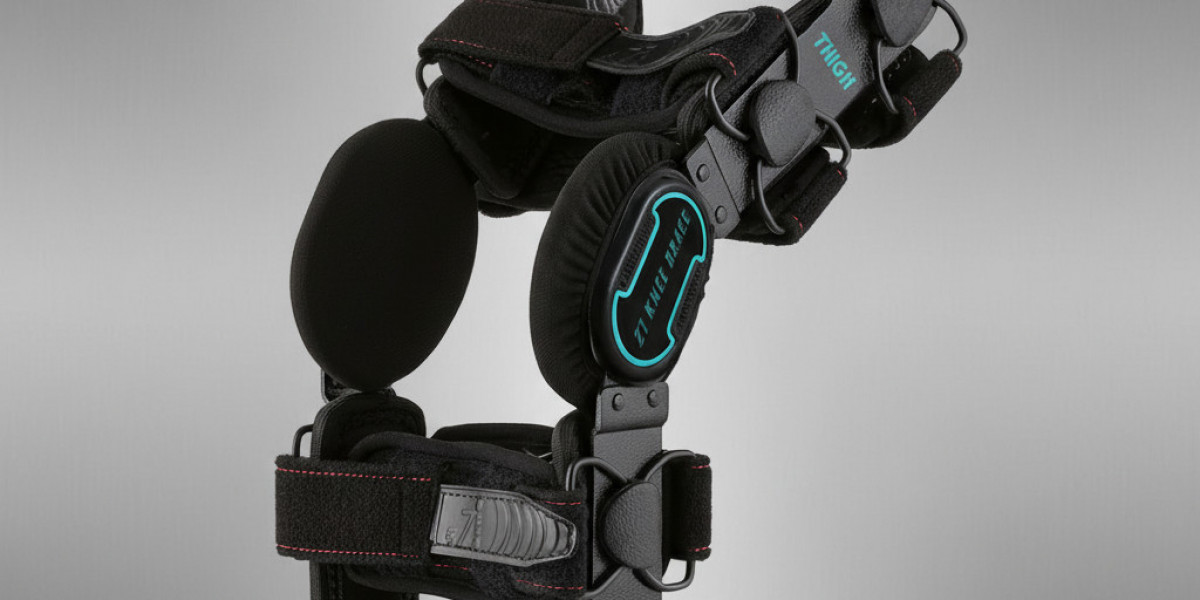A metal knee brace after surgery is a specialized support device designed to protect the knee joint during the early and intermediate stages of recovery. Whether you’ve undergone ACL reconstruction, meniscus repair, ligament surgery, or fracture treatment, this brace provides the structural stability your healing knee needs. The metal frame ensures strong support, controlled movement, and reduced stress on postoperative tissues.
Why a Metal Knee Brace Is Essential After Surgery
1. Provides Strong Structural Stability
Metal braces have rigid sidebars that prevent the knee from unwanted movements that may jeopardize healing. They keep the knee in alignment and reduce strain on surgical repairs.
2. Controls Range of Motion (ROM)
Most post-surgical metal braces allow adjustable hinge settings. This helps your doctor control how much your knee can bend or straighten during each phase of recovery.
3. Protects Ligaments and Surgical Repairs
After surgery, the tissues around your knee are vulnerable. A metal brace safeguards them by absorbing stresses and preventing sudden twisting or bending.
4. Reduces Pain and Swelling
By stabilizing the joint, the brace helps minimize unnecessary motion, which results in reduced inflammation, discomfort, and swelling.
5. Supports Safe Mobility
Early walking becomes easier and safer when your knee is supported by a metal brace. It boosts confidence and prevents accidental injuries.
Key Features of a Metal Knee Brace for Post-Surgery Use
Rigid metal frame for strong stabilization
Dual or single side hinges for controlled movement
Adjustable ROM settings (e.g., lock at 0°, limit at 30°, 60°, 90° as prescribed)
Padded straps for comfort and secure fit
Breathable inner lining to reduce skin irritation
Lightweight metal alloys such as aluminum or stainless steel for durability
When Should You Use a Metal Knee Brace After Surgery?
A doctor may recommend this brace after:
ACL, PCL, MCL, or LCL reconstruction
Meniscus repair or transplantation
Patella stabilization surgery
Knee arthroscopy with repair
Tibial plateau or femur fracture surgery
Total or partial ligament reconstruction procedures
Each surgery has specific brace-wearing guidelines. Follow your surgeon’s instructions for best results.
How to Use a Metal Knee Brace Properly
1. Align the Hinges Correctly
Ensure the hinges sit exactly beside the knee joint to allow natural bending and prevent discomfort.
2. Tighten the Straps Securely
The brace should be snug but not overly tight. Loose straps reduce support, while overtightening can restrict circulation.
3. Adjust According to Doctor’s Settings
If your brace has ROM settings, adjust only as recommended by your physiotherapist or surgeon.
4. Wear It During Activity
Use the brace during walking, exercise therapy, or standing for long periods—unless instructed otherwise.
5. Gradually Reduce Use
As healing progresses, your doctor may reduce your brace dependency over time.
Benefits of Using a Metal Knee Brace After Surgery
Maintains correct knee movement
Improves surgical outcomes
Prevents accidental injuries
Supports early weight-bearing
Enhances functional recovery
Promotes confidence during rehabilitation
Conclusion
A metal knee brace after surgery is an indispensable component of your recovery plan. Its robust structure, adjustable hinges, and superior stability help protect surgical repairs and ensure a smooth, safe rehabilitation journey. Whether you’re in the early healing stage or transitioning to physiotherapy, a metal brace helps you move with confidence and reduces the risk of reinjury.








